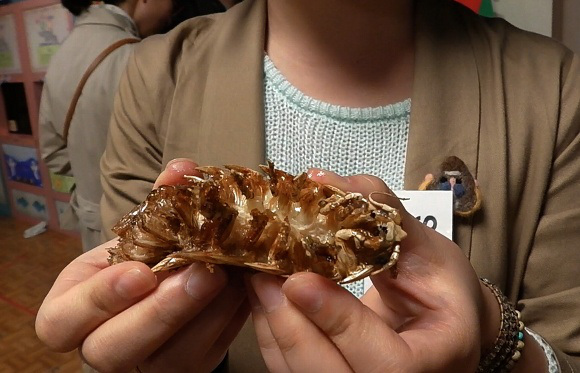
Last month, we brought you word about a special event at an aquarium in Yokohama where guests were going to be able to eat deep sea armored isopods, which are known in Japanese with the somewhat more descriptive name of ogusokumushi, or “giant armored bugs.”
We all had a good laugh at the zany idea for a publicity stunt, and our chuckling continued right up until the moment our boss said, “OK, one of us has to go try them.”
Eventually, our Japanese correspondent Momo was chosen for the job. Maybe this was because she’d mentioned that as a kid she used to eat locusts, which are a regional delicacy in certain rural parts of Japan. Maybe it was because she said the isopods look “just a little like bugs,” whereas the rest of the staff felt they look exactly like bugs. Or just maybe, it’s because the rest of us immediately hid under our desks when our editor starting looking for volunteers to chow down on the deep sea creatures.
Whatever the reason, Momo was on the next train from our office down to Yokohama and the port city’s Omoshiro Suizokukan Aquarium. The institution is located in Yokohama’s bustling Chinatown, but its small size means it doesn’t get nearly as many visitors as aquariums in the capital, or even the one farther outside Tokyo in Enoshima.
In order to attract guests, the Omoshiro Suizokukan Aquarium has to do something special, so on March 29 and 30, it held its third Deep Sea Festival. While the festivities included special tours by marine biologists whose expertise is focused on the deepest parts of the murky depths, the real draw was the chance to eat a creature most of us wouldn’t usually even have a chance to see, the armored isopod.
Of course, it would be rude to eat the creatures without first learning a little bit about them, so the aquarium staff first explained a little about the organisms. Their scientific name is bathynomus doederleini, and while that sounds like the moniker of a terrifying beast that got cut from a Harry Potter movie, armored isopods aren’t monsters. They’re crustaceans, like shrimp or crabs, although the armored isopod has more in common with the critter known as a wharf roach (which looks exactly like you’re imagining) than either of the aforementioned socially accepted seafood delicacies.
Armored isopods live on the seafloor at depths between 150 and 600 meters (492-1,969 feet) and were first discovered in Japan. Fittingly, Momo was informed the ones being served that day had been caught at nearby Suruga Bay.
Next, it was time for Momo to expand her educational familiarity with the creatures into a physical one. She was led to a tank containing about 20 of the cell phone-sized animals, which scuttled about with a surprising grace and energy.
Holding one in her hand, Momo remarked that despite the ispods’….less than pleasing appearance, they don’t have an odor, or really any smell at all. Turning one over revealed a large set of writhing legs, and when Momo placed her finger near them, the isopod gripped it like a newborn baby.
But Momo made the trip down to Yokohama not so much to get isopods in her hands, but in her stomach. Next, she was led into the kitchen, where there was a basket of the creatures waiting for the cook to get to work.
The field of isopod gastronomy is a new one, and diners’ palates are yet to become so bored with the ingredient that they demand novelty or experimentation in how it’s prepared. As such, the chef simply tossed the isopod into a pan of oil and fried it. Isopods cook quickly, and after taking Momo’s out of the pan, the chef added a dash of salt and seasonings.
As they cook, the scent is similar to that of shrimp, but with a few extra earthy notes. While the live isopods have a pale purple color, their bodies become white after cooking, and their legs uncurl slightly as well.
While all this was going on, Momo noticed that many of the employees who were helping prepare and serve the isopods were women. Given that bugs are a common phobia of Japanese females (not to mention male Internet writers), how did they feel about having to handle the crustaceans?
“We try to block out what we’re doing from our minds,” one of them explained. Making matters worse was the fact that the aquarium had sent out tweets about its unusual tasting ahead of time, resulting in far more visitors, and thus isopods that needed to be handled, than originally expected.
▼ The sometimes terrifying life of a scientist
Finally, it was time for Momo to dig in! Except, just how are you supposed to eat these things?
“If the shell seems hard, you can take it off,” explained one of the attendants, but Momo is far too proper to dirty her fingertips in such an unladylike manner. So instead, she gripped the body and bit into the head.
So how was it?
▼ “Hard….and painful.”
It isn’t called the armored isopod for nothing. Momo estimates that only about 20 percent of the animal is meat, with the rest being extra crunchy shell. She wasn’t sure if the majority of the shards as she chewed were coming from the legs, back, or head, but in any case, with each bite jagged pieces of the shell stabbed her in the mouth.
▼ It’s almost like they don’t even want to be eaten.
The taste itself wasn’t bad. Momo wouldn’t call it shrimp as shrimp-flavored, with some earthy, metallic accents, no doubt due to all the shell, mixed in. the flavor was gone from her taste buds long before the soreness from her jaw muscles, though.
But perhaps the most surprising thing at the event wasn’t what was on the menu, but two of Momo’s fellow diners: a young, lovey-dovey couple who she saw sharing a meal, with the boyfriend taking the head and his gal the tail.
Slightly concerned that the young lady had been forcefully dragged to the unusual event by her boyfriend, Momo asked her what she thought of the dish.
“It’s actually pretty good!” she responded with a smile. “We lined up for two hours just to get in here!”
So remember, all you romantics. Next time you’re planning a date, and the idea of a milkshake with two straws just seems to clichéd, suggest to your significant other that you split an armored isopod.
Photos: RocketNews24
[ Read in Japanese ]

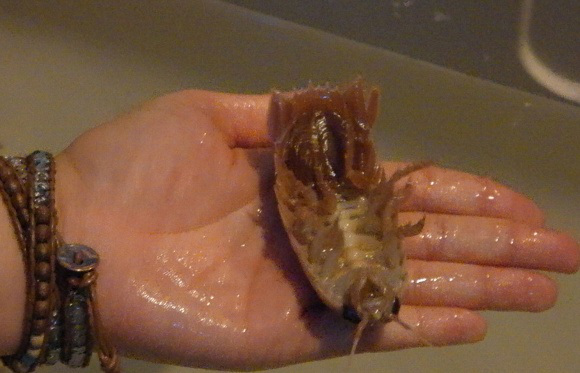
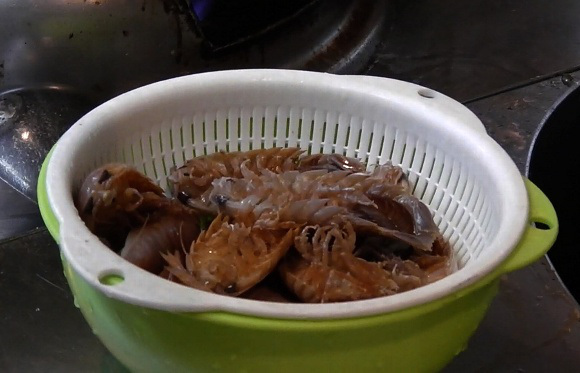
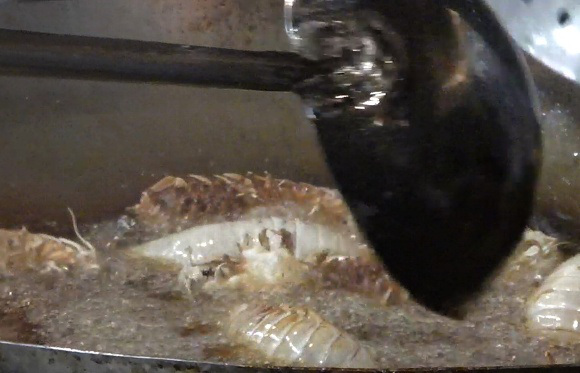
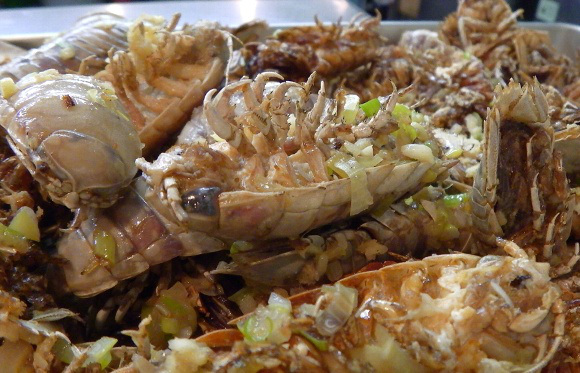
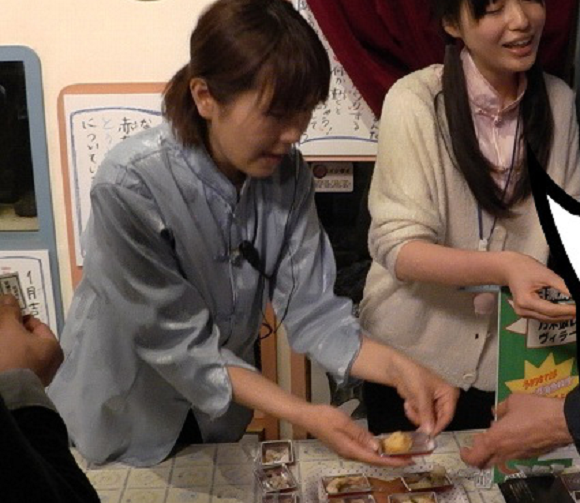
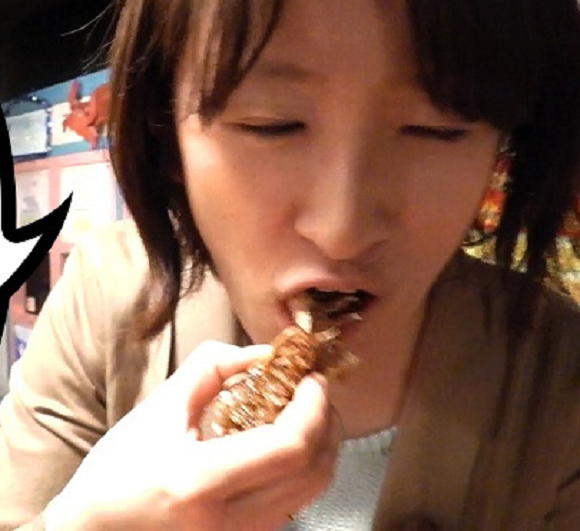
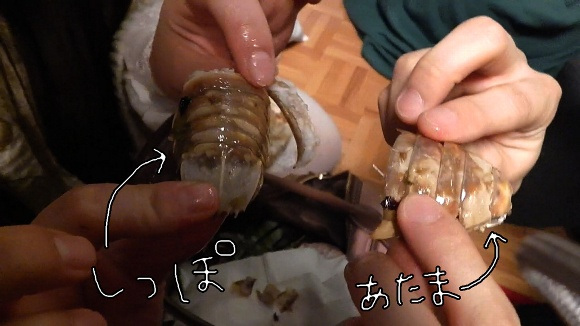

 Dinner is served! Get your teeth into giant marine isopods – tastes just like chicken!
Dinner is served! Get your teeth into giant marine isopods – tastes just like chicken! Oh… yummy! New snack to hit Japan: giant isopod senbei rice crackers!
Oh… yummy! New snack to hit Japan: giant isopod senbei rice crackers! We steel our hearts and sample Namikoshiken’s too-cute-to-eat, aquarium-themed wagashi sweets
We steel our hearts and sample Namikoshiken’s too-cute-to-eat, aquarium-themed wagashi sweets We sample the deep sea fish and more at this delectable sushi restaurant in Shizuoka Prefecture
We sample the deep sea fish and more at this delectable sushi restaurant in Shizuoka Prefecture We straight-up eat a beetle at possibly Japan’s craziest restaurant
We straight-up eat a beetle at possibly Japan’s craziest restaurant Disillusionment at Tsukiji’s tourist-target prices led us to a great ramen restaurant in Tokyo
Disillusionment at Tsukiji’s tourist-target prices led us to a great ramen restaurant in Tokyo Starbucks Japan releases new zodiac chilled cup drink for 2026
Starbucks Japan releases new zodiac chilled cup drink for 2026 Why you shouldn’t call this food “Hiroshimayaki” if you’re talking to people from Hiroshima
Why you shouldn’t call this food “Hiroshimayaki” if you’re talking to people from Hiroshima Large amount of supposed human organs left in Osaka marketplace
Large amount of supposed human organs left in Osaka marketplace A Japanese dating app matched our bachelorette with a Buddhist monk, and she learned some things
A Japanese dating app matched our bachelorette with a Buddhist monk, and she learned some things Princesses, fruits, and blacksmiths: Study reveals the 30 most unusual family names in Japan
Princesses, fruits, and blacksmiths: Study reveals the 30 most unusual family names in Japan Bando Taro proves family restaurants in Japan are on a whole other level
Bando Taro proves family restaurants in Japan are on a whole other level What’s inside the McDonald’s Japan fukubukuro lucky bag for 2026?
What’s inside the McDonald’s Japan fukubukuro lucky bag for 2026? Things Japanese girls do that make foreign guys run for the hills
Things Japanese girls do that make foreign guys run for the hills Starbucks on a Shinkansen bullet train platform: 6 tips for using the automated store in Japan
Starbucks on a Shinkansen bullet train platform: 6 tips for using the automated store in Japan 7-Eleven Japan starts new temporary luggage storage service in over 300 branches
7-Eleven Japan starts new temporary luggage storage service in over 300 branches Starbucks teams up with 166-year-old Kyoto doll maker for Year of the Horse decorations【Photos】
Starbucks teams up with 166-year-old Kyoto doll maker for Year of the Horse decorations【Photos】 Tokyo’s Tsukiji sushi neighborhood asks tour groups to stay away for the rest of the month
Tokyo’s Tsukiji sushi neighborhood asks tour groups to stay away for the rest of the month Street Fighter Hadouken Churros to be launched and eaten in Tokyo, Okami pudding on offer too
Street Fighter Hadouken Churros to be launched and eaten in Tokyo, Okami pudding on offer too Japanese avoiding domestic travel as foreign tourists increase, possibly creating vicious cycle
Japanese avoiding domestic travel as foreign tourists increase, possibly creating vicious cycle Japanese woman mistaken for bear
Japanese woman mistaken for bear Return of Totoro sequel short anime announced for Ghibli Park
Return of Totoro sequel short anime announced for Ghibli Park Is this the most relaxing Starbucks in Japan?
Is this the most relaxing Starbucks in Japan? More Shinkansen trains being added to Japan’s “golden route” to meet traveler demand
More Shinkansen trains being added to Japan’s “golden route” to meet traveler demand Japan’s human washing machines will go on sale to general public, demos to be held in Tokyo
Japan’s human washing machines will go on sale to general public, demos to be held in Tokyo Starbucks Japan unveils new Christmas goods and a rhinestone tumbler that costs 19,500 yen
Starbucks Japan unveils new Christmas goods and a rhinestone tumbler that costs 19,500 yen Japanese train company is letting fans buy its actual ticket gates for their homes
Japanese train company is letting fans buy its actual ticket gates for their homes Is China’s don’t-go-to-Japan warning affecting tourist crowds in Tokyo’s Asakusa neighborhood?
Is China’s don’t-go-to-Japan warning affecting tourist crowds in Tokyo’s Asakusa neighborhood? The 10 best day trips from downtown Tokyo【Survey】
The 10 best day trips from downtown Tokyo【Survey】 Tokyo considering law requiring more trash cans following litter increase in heavily touristed area
Tokyo considering law requiring more trash cans following litter increase in heavily touristed area Nintendo’s Kirby now delivering orders at Kura Sushi restaurants, but not in Japan
Nintendo’s Kirby now delivering orders at Kura Sushi restaurants, but not in Japan Survey asks foreign tourists what bothered them in Japan, more than half gave same answer
Survey asks foreign tourists what bothered them in Japan, more than half gave same answer Japan’s deadliest food claims more victims, but why do people keep eating it for New Year’s?
Japan’s deadliest food claims more victims, but why do people keep eating it for New Year’s? We deeply regret going into this tunnel on our walk in the mountains of Japan
We deeply regret going into this tunnel on our walk in the mountains of Japan Studio Ghibli releases Kodama forest spirits from Princess Mononoke to light up your home
Studio Ghibli releases Kodama forest spirits from Princess Mononoke to light up your home Major Japanese hotel chain says reservations via overseas booking sites may not be valid
Major Japanese hotel chain says reservations via overseas booking sites may not be valid Put sesame oil in your coffee? Japanese maker says it’s the best way to start your day【Taste test】
Put sesame oil in your coffee? Japanese maker says it’s the best way to start your day【Taste test】 The top 10 annoying foreign tourist behaviors on trains, as chosen by Japanese people【Survey】
The top 10 annoying foreign tourist behaviors on trains, as chosen by Japanese people【Survey】 No more using real katana for tourism activities, Japan’s National Police Agency says
No more using real katana for tourism activities, Japan’s National Police Agency says Starbucks Japan reveals new sakura drinkware collection, inspired by evening cherry blossoms
Starbucks Japan reveals new sakura drinkware collection, inspired by evening cherry blossoms Chinese woman’s two-pronged money-saving plan: Eat her grandson’s pet for dinner
Chinese woman’s two-pronged money-saving plan: Eat her grandson’s pet for dinner We try eating, and also try to eat, a shark burger and deep sea fish burger【Taste test?】
We try eating, and also try to eat, a shark burger and deep sea fish burger【Taste test?】 We made Japanese sweet chestnut paste and learned the hard way that it’s a labor of love
We made Japanese sweet chestnut paste and learned the hard way that it’s a labor of love We eat the best crayfish of our life at a Tokyo specialty restaurant【Taste test】
We eat the best crayfish of our life at a Tokyo specialty restaurant【Taste test】 We tried cricket udon made with 100 crickets, and then we added some more crickets
We tried cricket udon made with 100 crickets, and then we added some more crickets Fishermen in Hokkaido hope their shrimpy anime mascot will convince you to eat more ebi
Fishermen in Hokkaido hope their shrimpy anime mascot will convince you to eat more ebi These Guys Keep All Their Cuteness Even When Cooked! We Try Deep-Fried Axolotl in Osaka
These Guys Keep All Their Cuteness Even When Cooked! We Try Deep-Fried Axolotl in Osaka Japanese sea slugs found to remove their own heads and grow new bodies from them
Japanese sea slugs found to remove their own heads and grow new bodies from them We accidentally buy some silkworm candy at Hokkaido’s Vending Machine Land
We accidentally buy some silkworm candy at Hokkaido’s Vending Machine Land Demonic anime ad commands us to eat at KFC, or risk angering Cheddar Lucifer【Video】
Demonic anime ad commands us to eat at KFC, or risk angering Cheddar Lucifer【Video】 Japan’s hoya is a straight-up edible video game monster, and here’s how to prepare/eat it【Photos】
Japan’s hoya is a straight-up edible video game monster, and here’s how to prepare/eat it【Photos】 You can buy, and eat, a grilled sparrow on the streets of Kyoto, so we did【Taste test】
You can buy, and eat, a grilled sparrow on the streets of Kyoto, so we did【Taste test】 Tokyo has an exclusive curry restaurant for members only to eat in, and we’ve tried its food
Tokyo has an exclusive curry restaurant for members only to eat in, and we’ve tried its food Video game director/composer Yumi Hashimoto tells us about Japan’s indie scene and her newest title
Video game director/composer Yumi Hashimoto tells us about Japan’s indie scene and her newest title
Leave a Reply